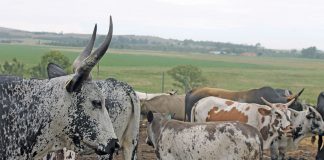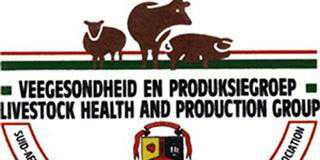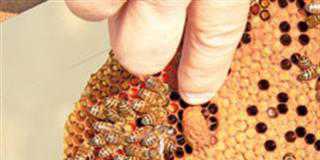The Huntersvlei and Skietlaagte feedlots near Viljoenskroon accommodate about 1 600 cattle at any given time. Feedlot profit margins are currently hamstrung by high weaner prices and continued downward pressure on beef prices, so high quality weaners that perform in a feedlot are a valuable resource.
This is where the Sussex, with its high average daily gain (ADG), favourable feed conversion ratio (FCR) and first-rate carcass, makes a huge contribution. “We don’t buy weaners at auctions,” says Arno Cronje, general manager of the Rhys Evans Group. “Instead, we source them from specific farmers, preferably those using Sussex bulls in their weaner production programmes.
Some 8% of our weaners come from the Rhys Evans Group’s own commercial Sussex herd of 300 breeding cows. “Records of 420 Sussex weaners entering the feedlot at an average weight of 245kg show that some easily achieved ADGs of 1,85kg for total feedlot days. Over a 116-day feeding period, the average liveweight at slaughter was 456kg. Some weaners are backgrounded before entering the feedlot, depending on the availability and quantity of grazing. When backgrounded, the results are even more impressive, with ADGs of up to 2,04kg over 76 days.”
Adaptation and grower rations
The weaners are processed – tagged, weighed, inoculated and dewormed – on arrival. Inoculations against pasteurella, botulism, quarter evil, infectious bovine rhinotracheitis (IBR), anthrax and lumpy skin disease are given. Each weaner gets a growth-stimulant implant. Weaners not selected for backgrounding are fed an adaptation ration of 45% silage, 45% hominy chop and 10% Sernick HPC for 14 to 21 days.
This then changes to a grower ration of 60% hominy chop, 30% silage and 10% HPC, followed by a 30-day finishing phase in which the ration is unchanged, but the growth hormone Zilmax is included, which is withdrawn one week before slaughter. Working closely with a nutritionist prevents unnecessary mortality or slow growth, and feedlot records show that the Sussex outperforms 10 other breeds.
Herd manager Dallas Phillips points out that the breed is but one of many factors contributing to the success of a feedlot. In their case, the size of the operation is an important factor. “A smaller feedlot is less dependent on contract slaughtering and can react more easily to short-term changes, such as a spike in the grain price or increasing weaner prices.”
Although the Huntersvlei and Skietlaagte feedlots are relatively small, their situation is logistically very favourable. More than 80% of the weaners are sourced within a radius of 150km, and a feed mill only a few kilometres from the feedlots supplies the hominy chop. This, combined with the fact that most of the A-grade animals are marketed through the Huntersvlei abattoir, contributes to huge savings on transport costs. And feedlot manure is spread out onto the maize lands, increasing yield and reducing fertiliser costs.
Health status of the weaner is important
“Another reason for buying directly from our farm is that we know the herd management and health status of the weaners,” continues Dallas. “This helps reduce the mortality rate. By buying healthy top-quality animals, we keep morbidity and mortality exceptionally low, and aim for a mortality rate of less than 1%.
“The average Sussex or Sussex-cross slaughters out at 59,4% on an empty stomach basis to give a high average cold carcass weight of 261kg. An added bonus is the exceptional quality of Sussex beef. I foresee that the Sussex will play an increasingly important role in the feedlot industry of the future.”













